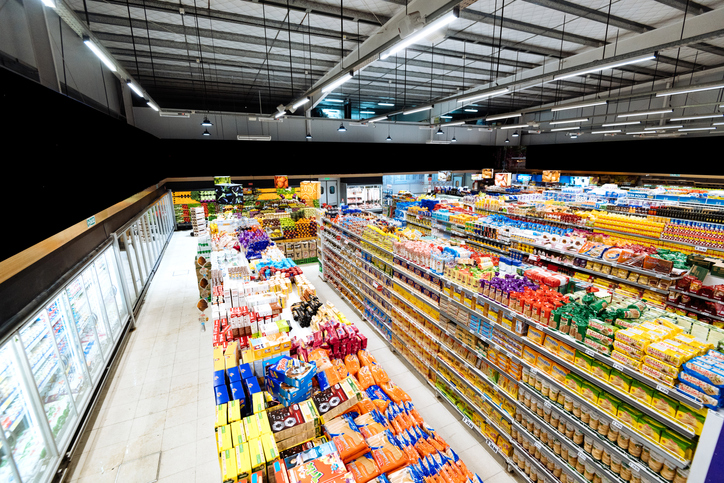
 Zombies have long been part of pop culture. Now, they have become central in the culture of pop, or more specifically, to Coca-Cola and other food and beverage brands. Coke CEO James Quincey said in July 2020, "We are shifting to prioritizing fewer but bigger and stronger brands across various consumer needs. At the same time, we need to do a better job nurturing and growing smaller, more enduing propositions and exiting some zombie brands."
Zombies have long been part of pop culture. Now, they have become central in the culture of pop, or more specifically, to Coca-Cola and other food and beverage brands. Coke CEO James Quincey said in July 2020, "We are shifting to prioritizing fewer but bigger and stronger brands across various consumer needs. At the same time, we need to do a better job nurturing and growing smaller, more enduing propositions and exiting some zombie brands."
You may ask yourself, “What do zombies have to do with a CPG supply chain?” A lot, as it turns out. Marc Andreessen of venture capital firm Andreessen Horowitz defines a zombie as a product that is “technically dead but still moving forward. ...It won't get better, but it also won't die.” These CPG products are like their “undead” cinematic counterparts. They stagger through their environment unable to keep pace with faster, stronger brands. In fact, at Coke 50 percent of their product portfolio drives just two percent of global sales, limping along behind bigger, more profitable, less volatile brands. Poor financial performance alone should make any corporate zombie hunter eager to lop off those products’ heads. Unfortunately, just like in the movies, it’s easier to talk about killing a zombie than actually doing it.
The difficultly of killing an underperforming SKU shouldn’t stop CPG companies from embarking on that effort. In reality, portfolio zombies that haunt manufacturing operations and store shelves could ultimately prove financially devastating in a vertical with ever increasing global complexity and demand patterns. Here are three reasons why it’s time to go on a zombie hunt in your portfolio.
1. Trimming supply chain and manufacturing overhead will increase profits
CPG companies have finite capacity throughout their supply chains from sourcing materials for product and packaging, engaging and changing over production lines, securing distribution channels and transport, and stocking multiple products on shelves. These processes are resource and labor intensive. Because of this, many CPG companies are re-evaluating product performance to identify slow movers and tighten up their operations to increase profitability. A perfect example of this is Mondelez. CEO Dirk Van De Put announced in July 2020 that the company would eliminate one in four of its snack product SKUs to streamline its supply chains and focus on popular products with higher demand in the wake of the pandemic.
2. Large brands are losing market share to small brands in new channels
The CPG vertical used to be lucrative and one-size-fits-all. Goods were shipped to a brick and mortar store, and CPG giants made double-digit margins. According to McKinsey, the mass market brands yield gross margins 25 percent over non-branded competitors. But the market is changing. Forbes reports that over $10 billion in CPG sales has shifted from small brands to large brands since 2013. It’s become clear that large brands are struggling to grow as smaller, niche brands catering to new markets and customers (who are often very cost conscious) rise in influence and wallet share. This trend again signals that CPG companies would be well advised to focus on fast-moving, innovative products in their portfolio to meet demand. This references back to the first point: Limited resources will require rethinking where to invest resources. No company can be all things to all people.
3. Retailers are thinking about their numbers too
Grocery stores and other retailers are taking a hard look at their bottom line and stocking their shelves with fewer, faster moving products in an effort to improve their margins as well as the overall shopping experience. IGA CEO John Ross recently said that the independently owned stores in his chain are stocking fewer items in an attempt to streamline in-store decision-making, thereby speeding up the shopping experience through limited choice and getting customers in and out the door faster. In the short term, this means consumers will spend less time in the stores, giving staff more time to clean and disinfect. In the long term, retailers will leverage this strategy to make themselves more efficient and profitable. When retailers are moving in this direction, it no longer makes sense to flood the market with multiple product lines when fewer are requested.
Now, it will not be as simple as flipping a switch to turn off product lines. There will undoubtedly be ramifications caused by SKU rationalization, but if properly planned for, this will be managed successfully. If nothing is done, then in true zombie fashion, these products will eat everything in close proximity, including the healthy profits from your high value SKUs. The time has come to don “zombie product” hunting gear and kill these products from your portfolio, so that they never rise from the dead again.
Ready to weed out your zombies and rescue your supply chain? Schedule a call with a Kinaxis CP expert.




